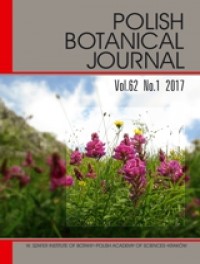Polish Botanical Journa-Plant Fungal and Sistematics Q1 Unclaimed
Polish Botanical Journa-Plant Fungal and Sistematics is a journal indexed in SJR in Plant Science with an H index of 151. It is an CC BY-NC-ND Journal with a Single blind Peer Review review system The scope of the journal is focused on plant and fungi biodiversity, biosystematics, phytogeography, evolution, plant ecology. It has an SJR impact factor of 3,571 and it has a best quartile of Q1. It is published in English. It has an SJR impact factor of 3,571.
Polish Botanical Journa-Plant Fungal and Sistematics focuses its scope in these topics and keywords: als, approach, cell, clinical, disease, ftd, genetic, human, network, phenotypes, ...
Type: Journal
Type of Copyright: CC BY-NC-ND
Languages: English
Open Access Policy: Open Access
Type of publications:
Publication frecuency: -


- €
Inmediate OANPD
Embargoed OA- €
Non OAMetrics
3,571
SJR Impact factor151
H Index160
Total Docs (Last Year)458
Total Docs (3 years)9516
Total Refs3597
Total Cites (3 years)401
Citable Docs (3 years)7.02
Cites/Doc (2 years)59.48
Ref/DocOther journals with similar parameters
Annual Review of Plant Biology Q1
Fungal Diversity Q1
Molecular Plant Q1
Nature Plants Q1
Annual Review of Phytopathology Q1
Compare this journals

Comments